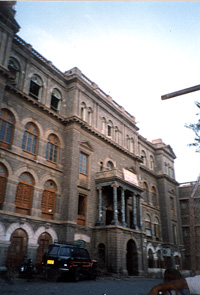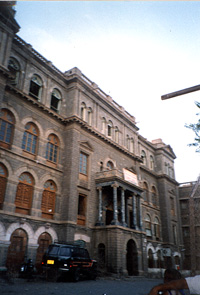
Lahj Exquiste Cultural Features [Archives:2000/21/Culture]
May 22 2000

Yemen Times
Lahj is one of the historical cities in Yemen whose history has inspired very many Yemeni, Arab and foreign researchers and historians to fathom the secrets of its features and peculiarities.
Excavations carried out by the Russian and the German expeditions in Lahj since 1996 have brought to light a number of ancient potters dating to BC 1500-2000. The findings were said to belong to the African Horn and Nuba of Sudan. In a village called Al-Niosh near Saber of Lahj, a historical place dating to 1000 BC, was discovered. This was given the name of Om’alibah. The expeditions revealed that excavations at the location showed that Saber played a great role as a trading and industrial center at the time. “Saber used to be extending from Bab Al-Mandab in the West to Jizan in the North,” a source from the Museums and Antiquities Office of Aden said.
In “Inscription Historqes”, the author mentioned that Saber marked for a long period the end of Himiarian control.
Historically speaking, Saber witnessed many battles fought to capture Aden and its important port that was the linking point between the East and the West.
Due to internal migration to Lahj, it expanded in course of time. Many people from different origins in Yemen inhabited Lahj. Handicrafts flourished as well, and as a result there were specialized markets such as meat, fish, smithery, etc. For each market there was a leader who was responsible for running their affairs with the state. Today, these markets are supervised by municipality offices. Zones in the city were also named according to the social class or profession or even religion of their inhabitants. For example, there were the zones of the Jews, blacksmiths, the elite, etc. For each of these zones there was a market, a mosque and its own water wells.
Many groups of people inhabited the valleys of Lahj where plenty of food and water was available. The closeness of these valleys and arable lands helped unite those groups that integrated or incorporated in a geographical identity free from racial prejudice or discrimination. In such fertile lands, agriculture found a place to flourish. People cultivated lands and built dams and water reservoirs. The fertile land of the valleys helped people grow many kinds of plants, crops and tress. Among these, Lahj has been reputed for growing sweet-smelling plants such as Arabian Jasmine, Kadhi and Al-Mashhoom-al-lahji. The involvement in grazing and cultivating land helped people lead a peaceful life. Special attention was paid to agriculture as Sultans used to appoint an expert person (usually called a Sheikh) to be a head of a committee of experts to supervise agricultural affairs. One of the responsibilities of the committee was distributing water among the arable lands according to a the agriculture law for 1951. Land, besides animal wealth, was at the time the only means for living.
Lahjies usually wear colored shiny hats, Maqtab (a triangle piece of cloth turned round the waist and legs) and Jenbiah. Senior ladies prefer white or black cotton dresses with light black scarfs on their heads. Wives and young ladies are fond of bright clothes made of silk, perfumes and make ups.
Lahjies used to break their fasting in Ramadhan upon the sound of a gun before electricity was supplied. At Adhan time for Al-Maghreb prayer, a red flag would be hoisted as a sign for soldiers to fire the gun. Firing the gun also took place on Eid as a sign of beginning the Eid prayers. Upon hearing the sound, the Sultan would come out of his court accompanied by his entourage to go to the mosque to perform the prayers. After this a luncheon party was to be given at the Sultan’s palace and then Maqial would begin. During the Maqial, singers were used to present their songs with the accompaniment of sweet pieces of music.
On the other hand, Lahj had its own cultural heritage. Many educated people had graduated from Lahj schools. One of the most outstanding literary figures of the time was Al-Qomindan who is considered to be the father of Lahj culture. He was both a poet and a composer and he helped Lahji musical scales and types of Lahji dance develop and become popular not only in Yemen but in the neighboring countries as well. After his death, a number of poets and musicians followed his footsteps and created new musical scales and made the Lahji music and songs more distinguishable.
——
[archive-e:21-v:2000-y:2000-d:2000-05-22-p:./2000/iss21/culture.htm]


